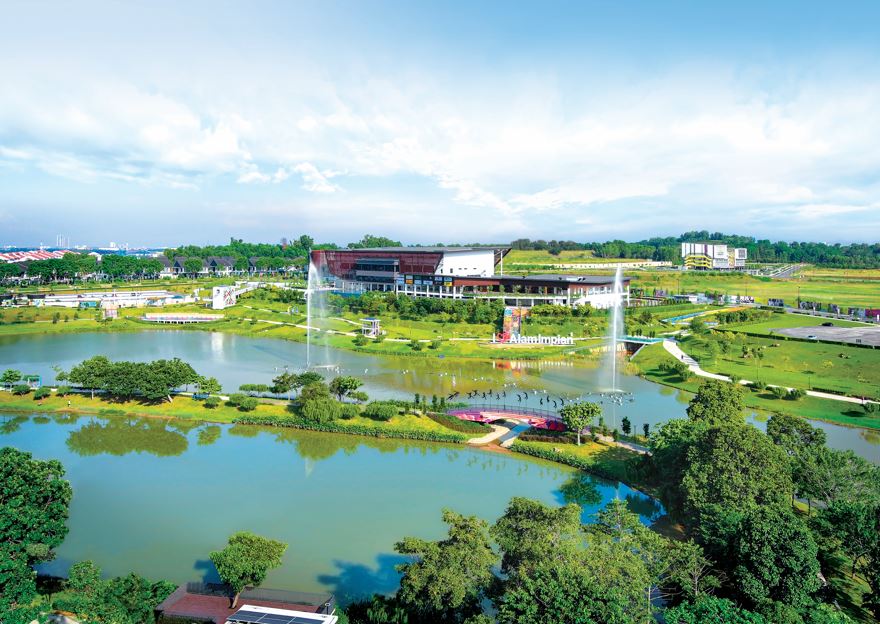By Joseph Wong
As temperatures continue to be stifling, the tell-tale sounds of air-conditioner compressors humming in the background has become commonplace over the past few months even as people, particularly those seeking to escape the heat, flock to the shopping centres to cool down.
Not surprisingly, the consumption of electricity of most households has risen sharply since the beginning of the year but spiked in March when temperature started peaking. January and February also saw an increase of between 4% and 10% while on March 6, 2024 Tenaga Nasional Bhd (TNB) recorded an all-time high peak demand of 17,175MW, beating the previous record peak demand of 16,901MW, which was registered on June 6, 2014.
According to the Malaysian Meteorological Department (METMalaysia), the heat wave is expected to continue through May but it looks like it could possibly last longer than expected. MetMalaysia categorises Level 2 heatwaves as temperatures ranging from 37°C to 40°C, sustained over three consecutive days, with anything exceeding this threshold classified as an extreme heatwave.
The ongoing situation underscores the need for vigilant monitoring and precautionary measures, particularly in regions susceptible to such climatic fluctuations. The regions most affected by these weather patterns include the west coast and interior of the peninsula as well as parts of Sabah and Sarawak.
Impact of the heatwave
As of early April 2024, Malaysia is in the throes of an extreme heatwave, with METMalaysia reporting exceptionally high temperatures affecting vast regions. This heatwave has exacerbated the already hot and dry conditions prevalent in many areas, leading to significant distress among the population. The heat has been particularly brutal in Sabah, where as of April 4, a total of 58,080 families across 12 districts have been severely affected by the drought and high temperatures. Other states have also suffered, with approximately 20,000 families, especially farmers in the northern and east coast states, facing similar hardships.
The heatwave's impact on agriculture has been profound. Crops are wilting under the relentless sun, and water supplies are dwindling. Farmers, especially those in the northern and east coast states, are struggling to maintain their livelihoods as the intense heat takes a toll on both plants and animals. The lack of rain during this period has only compounded the difficulties, making it one of the toughest seasons in recent memory.
Coping with the heat
In the meantime, coping with the heatwave remains a priority. Authorities have been urging citizens to take precautions to avoid heat-related illnesses. Staying hydrated, avoiding strenuous outdoor activities during peak heat hours and seeking shelter in cool, shaded areas are essential steps for managing the heat.
The government and local agencies have also been working tirelessly to provide assistance to those most affected. Water distribution efforts are in place in the hardest-hit areas, and emergency services are on high alert to respond to heat-related emergencies. Community centres and shelters are being set up to offer relief from the heat, particularly for vulnerable populations such as the elderly and young children.
Impact on homes
Moreover, heatwaves can significantly affect homes, impacting both the comfort of occupants and the overall performance and efficiency of the building. During a heatwave, outdoor temperatures can soar especially when there are many people within, generating body heat, leading to increased indoor temperatures. This can make it challenging for occupants to stay comfortable and can put additional stress on cooling systems, be it fans, evaporative coolers or air-conditioning units.
Heat waves can pose significant health and safety risks to occupants, especially the elderly, young children and those with underlying health conditions. Ensuring homes have adequate ventilation, air-conditioning and access to cool water is crucial during extreme heat events.
To maintain comfortable indoor temperatures during a heat wave, most people nowadays use air-conditioning systems which may have to work harder and run for longer periods. This increases energy demand, and depending on the model and age of the air-conditioning systems, this can lead to higher electricity bills especially for units that are not energy-efficient. Unfortunately, the more people use air-conditioners, it also has an impact on the environment as more carbon emissions are generated, leading to a greater greenhouse effect, hence, more heatwaves. It is a vicious cycle.
In addition, prolonged exposure to high temperatures can cause building materials to deteriorate over time. This may include damage to roofing materials, paint and sealants, potentially leading to costly repairs.
Mitigation strategies for homeowners
To mitigate the effects of heat waves on houses, homeowners can take several proactive steps. For high-rise residential buildings, the management corporation or joint management body can consider turning their rooftop into green roofs to mitigate the heat buildup. For landed property, the usage of roofing materials that reflect more sunlight and absorb less heat to reduce the temperature inside the home. Light-coloured or reflective roofing materials are particularly effective in minimising heat absorption. By choosing these types of materials, homeowners can significantly lower the amount of heat that enters their living spaces, making it easier to maintain comfortable indoor temperatures.
Additionally, installing exhaust ventilation systems can help expel hot air that has built up in the space between the ceiling and roof, cooling down interior temperatures by a few degrees.
Ensuring that air conditioning systems are properly maintained and functioning efficiently is crucial during heat waves. Homeowners should schedule regular maintenance with HVAC professionals to inspect and clean coils, check refrigerant levels and ensure all components are working properly. Cleaning or replacing air filters every one to three months is essential to maintain good airflow and system efficiency. Inspecting and sealing ductwork can prevent energy loss and calibrating thermostats ensures accurate temperature control. Additionally, keeping the outdoor unit clear of debris and checking for insulation issues around the unit can enhance performance.
Monitoring system performance regularly, especially during peak usage, helps identify potential problems early. If the air conditioning system is over 10-15 years old, upgrading to a more energy-efficient model can significantly reduce energy consumption. These steps not only prepare the air conditioning system to handle increased demands during heat waves but also maintain a comfortable indoor environment and prevent costly breakdowns.
Other methods include sealing air leaks around doors and windows, improving the overall insulation of the home and preventing heat from penetrating into homes. Plants on the balcony, usage of curtains or blinds or window shades will help to reduce heat build-up.
And the public should also stay informed. Keep up with local weather forecasts and take appropriate precautions during extreme heat events to ensure the safety and comfort of all occupants.
By taking these steps, homeowners can better manage the impacts of heat waves, ensuring their homes remain comfortable and energy-efficient, while also safeguarding the health and safety of their occupants.
Looking Ahead
As Malaysia navigates through this challenging period, the resilience of its people and the support from government agencies and communities will be crucial. The transition to the monsoon phase brings hope for relief from the oppressive heatwave, but it also requires preparedness for the accompanying storms. By staying informed and taking necessary precautions, Malaysians can weather this period and look forward to the cooler, wetter days ahead.
The current weather conditions serve as a reminder of the importance of being prepared for natural climatic fluctuations. As global climate patterns continue to change, countries around the world, including Malaysia, must adapt to increasingly unpredictable and extreme weather events. Investments in weather monitoring and forecasting, water management infrastructure, and community preparedness are vital to mitigating the impacts of such events in the future.
In summary, while the heatwave of early 2024 has brought significant challenges to Malaysia, the monsoon transition phase offers a path to recovery. With continued vigilance and support, the nation can overcome these climatic adversities and emerge stronger and more resilient.
Stay ahead of the crowd and enjoy fresh insights on real estate, property development, and lifestyle trends when you subscribe to our newsletter and follow us on social media.
















































